We don’t need to tell you that London is an ancient city that has gone through many different eras as it’s grown – some of which have been replaced more peacefully than others! But despite its gleaming skyscrapers and modern features, London still has echoes of the past in the form of ruins scattered throughout its vast tapestry. You just need to know where to look…
You can see markers of two of the more destructive periods of London’s history in the ruins of one church, just a stone’s throw away from the mighty and imposing Tower of London. St-Dunstan-in-the-East has stood on this hill since around 1100, dedicated to the saint of blacksmiths, silversmiths, and goldsmiths (a fitting choice given the surrounding industries of the burgeoning city!).
When the Great Fire rampaged through the ancient heart of London in 1666, the church was badly damaged, and so Sir Christopher Wren (who was given the task of rebuilding London’s churches after the devastation, and who is best known for his post-Fire reincarnation of St Paul’s Cathedral) patched up the surviving building and added a glorious new steeple to the church.
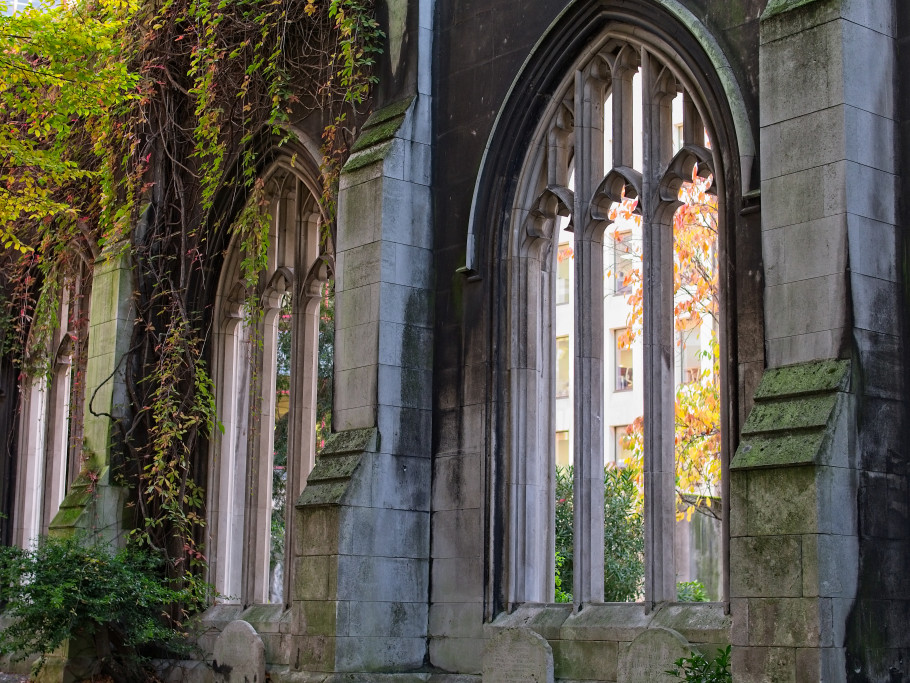
This couldn’t last forever, of course, and the church was rebuilt due to weaknesses inflicted on the walls by the weight of its roof, with Wren’s beautiful steeple retained. But worse was to come – in 1941, at the height of the Blitz, the church suffered extensive bomb damage, with only a few walls and Wren’s steeple escaping the inferno.
St Dunstan-in-the-East no longer serves as a church, but after the war the decision was taken to preserve the ruins and form a public garden. Visitors can now stroll among the beautiful plantings and fountains, while seeing the damage from the war up close. Nature has started to overtake the stark ruins, and, in spring or summer, this hidden treasure down a forgotten London street acts as a secret garden, while also offering some of the city’s most spectacular ruins.
London may have become a sprawling metropolis since its founding as Londinium by the Romans in the first century AD, but the centre of the city is still full of secrets that hint at its classical history. Chief amongst these is the London Mithraeum, also known as the Temple of Mithras.
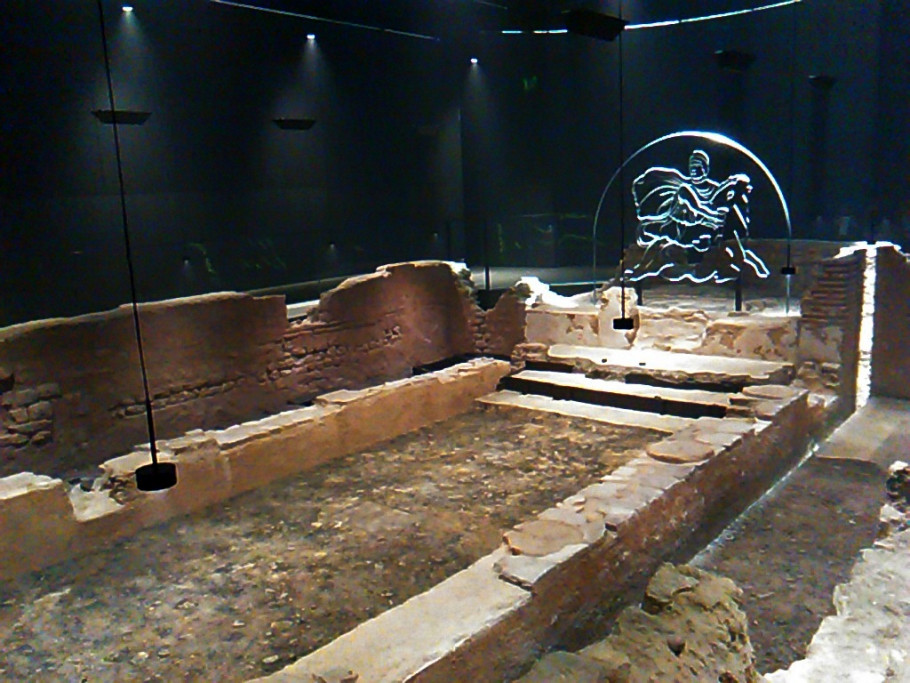
While many of the Roman gods are widely known (Jupiter, Mars, Venus, and Mercury, to name just a few of the familiar bodies that dominate our celestial sphere), life on the frontier was a somewhat different proposition for the average Roman soldier. And, make no mistake, Londinium was the frontier, a long way from home for the majority of Roman soldiers sent to bring civilisation and the pax Romana to this lowly island colony. So it’s unsurprising that the Romans brought their gods with them, including the mysterious cult of Mithras.
While we don’t know a huge amount about the details of the cult itself, the god Mithras is often found in scenes depicting him being born from a rock or slaying a bull, and historians believe that the cult of Mithras acted as an early competitor to the burgeoning religion of Christianity. The Roman Empire adopted Christianity as its state religion in the 4th Century AD, at which point we have records of the followers of Mithras being persecuted by Christians – the world we know would have been very different if Constantine had supported this rival religion in those early days!
Mithras-worship has been found in remains spanning the western Roman Empire, from North Africa all the way north to Hadrian’s Wall. But one of the most spectacular mithraea was found deep under Central London, just over sixty years ago! When building a new office block in the financial heart of London in 1954, archaeologists discovered the foundations of an incredibly well preserved temple, with evidence that it was dedicated to Mithras. This was moved, stone by stone, for public display around 100 metres away, but this reconstruction was widely criticised as being inaccurate.
In 2007, however, plans were drawn up to move the Mithraeum back to its original site, chosen by the Romans for its position on the banks of what would have been the River Walbrook, a tributary to the River Thames and a key source of freshwater for the Roman inhabitants of the small town. In 2010, Bloomberg bought the building, and worked with archaeologists to establish an exhibition space seven metres below street level under their new building, which allowed the Mithraeum to be displayed as it was originally discovered, and on the original site of its construction.
Nowadays, anyone can go and explore this Roman relic for themselves, free of charge. The ruins themselves are easily fascinating enough to make it onto our list of highlights on their own, but the contrast between the Roman temple and the sleek new skyscrapers that now cluster around the neighbourhood provide the sort of startling contrast that you really need to see for yourself to get a sense of just how long this incredible city has been evolving, and to spark a curiosity about just what might be hiding right under our feet…
Many Londoners remember the 2012 Olympics with huge fondness, when the world came to our home for one glorious summer. But in 1851, London played host to an even more global and celebratory event, this time celebrating knowledge and innovation, rather than sporting feats.
The Great Exhibition (also known by its longer, and far less catchy, full name, the Great Exhibition of the Works of Industry of All Nations) was the very first World Fair, and it was held in London’s beautiful Hyde Park as a way to showcase the very best and brightest of the British Empire at a time when the sun truly did not set on it. The event had the royal seal of approval, organised as it was by Prince Albert, husband of Queen Victoria, in the park that would one day bear a stunning memorial to his memory.
The centrepiece of this spectacular event was the Crystal Palace, a huge glass structure covering almost one million square feet, built to house the fabulous inventions brought to London in dazzling sunlight, using the most advanced architectural techniques of the day. The committee to oversee construction included engineering luminaries such as Isembard Kingdom Brunel, famous for his work on Britain’s railways, tunnels, steamships, and bridges, earning him recognition as one of the giants behind the Industrial Revolution.
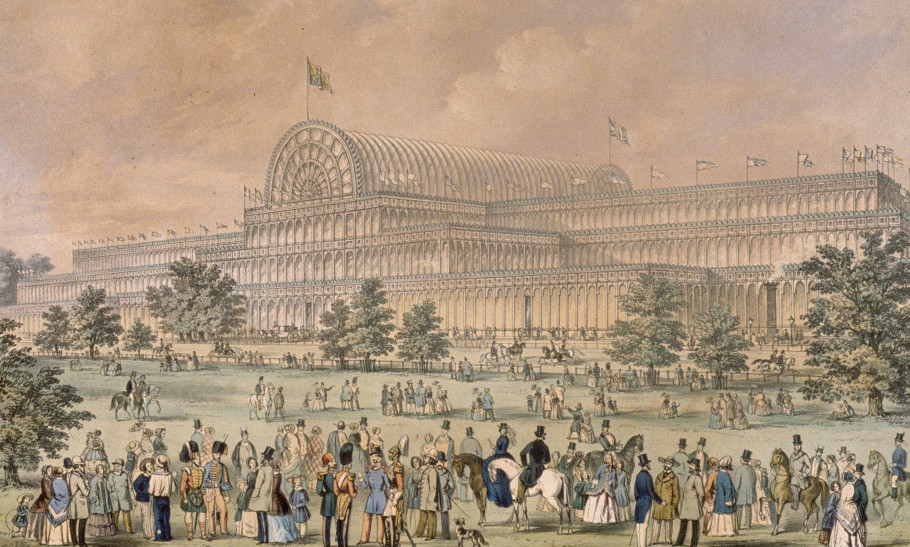
14,000 exhibitors came to the Great Exhibition, showing off technologies that would come to define the future – including a precursor to the fax machine, early prototypes of the world’s first voting machine, Samuel Colt and his new design for a pistol he called the Colt Navy, the first modern pay toilets, and a range of exciting new scientific instruments built to the highest specification. Many visitors left with a new souvenir, a stereoscope card of the stunning Crystal Palace, which allowed Victorian attendees to enjoy ‘moving’ postcards of the event, a technique that would later form the basis for 3D films as we know them today.
And if the attractions were good, the visitors were even better. The list of attendees reads like an exclusive membership club – Charles Darwin, Karl Marx, Charlotte Brontë, Charles Dickens, Lewis Carroll, George Eliot, Alfred Tennyson, and William Makepeace Thackeray all walked through the gleaming glass domes of the Great Exhibition, being inspired and delighted by wonders on show such as the Koh-i-Nor diamond (the largest known diamond in the world at the time, and which would later form part of the Crown Jewels).
After the Great Exhibition ended, the Crystal Palace was moved to south London, where it stood in a park bearing its name. To this day, the park remains, along with the wider neighbourhood and professional football club that all share the name Crystal Palace. You can even walk through the park and see sculptures of dinosaurs that date back to the time of the Great Exhibition, a popular oddity for Londoners to discover (though far from accurate based on what we now know of these beasts!). One thing you won’t find, however, is the unique Crystal Palace itself.
Unfortunately, the building burned down in 1936, which still gives it an impressive shelf life of more than a century – not bad for a building designed to be temporary! The footprint of this glass behemoth still sprawl across Crystal Palace Park, just waiting for you to stumble across – this includes a natural amphitheatre that Crystal Palace architect Joseph Paxton wanted to become a feature of the new location, and which has since hosted musical legends like Pink Floyd, Bob Marley, Elton John, Eric Clapton and the Beach Boys.
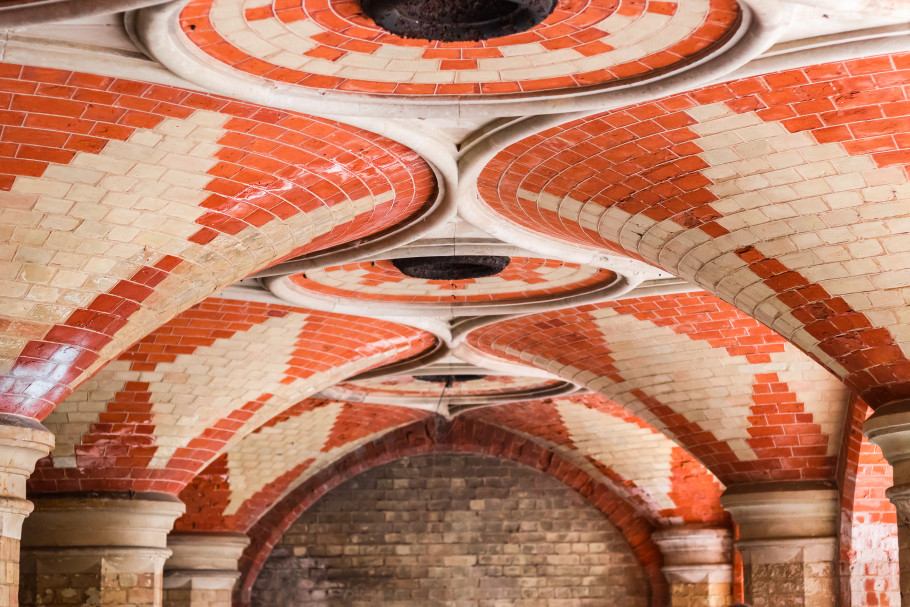
If you don’t fancy a trip to south London, you can always head to Hyde Park, the original location of the Crystal Palace, and you’ll be able to see how the pathways around this beautiful green space still hold the shape of the massive event that once took place among the trees. If you listen closely, you might even hear some of the echoes of when the world came to London in 1851 to visit a glass structure three times the size of St Paul’s Cathedral, and every bit as spectacular.
Just across London Bridge is Southwark, an area that was largely held by the Bishops of Winchester. You would be forgiven for thinking such a devout profession might mean a more modest abode for these characters. You would be mistaken, however – the Bishops of Winchester were immensely powerful, essentially performing the modern function of the Chancellor of the Exchequer (our version of the Secretary of the Treasury, for our American friends).
This power and wealth is demonstrated best by the ruins of Winchester Palace, built in the 12th Century to act as the bishop’s London base. It was well sited – not only was it surrounded by the land the bishopric owned, but it was easily within reach from landmarks where the role of running the country could be performed alongside the monarch themselves, such as the Palace of Westminster and the Tower of London.
The palace stood on the site until the 17th Century, when it was divided into tenements and warehouses, and it was finally destroyed by a fire in 1814. Nowadays, the beautiful tracery of the great hall’s rose window left standing like a skeletal testament to this former palace, and the mossy foundations of the palace’s extensive wine cellar, are the only remnants of the former glory of this once-stately home. But cast your mind back to the sprawling villa that included gardens, a tennis court, and a bowling alley, and you’ll enjoy a unique testament to the power that this site once held over the entire country.
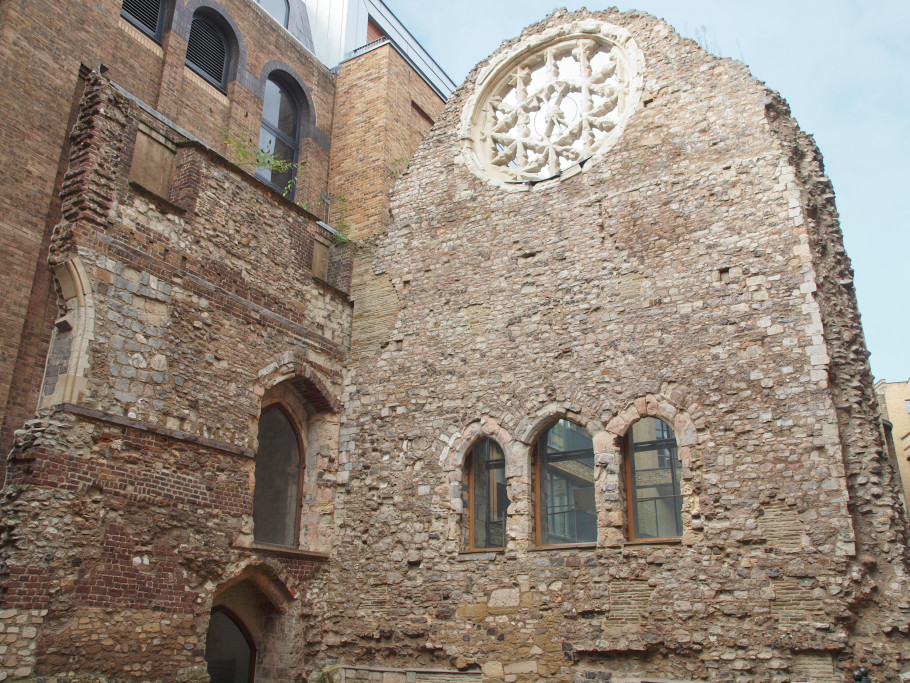
Monarchs were not immune to the charms of the palace either, with James I of Scotland holding his wedding feast here – though, of course, it did help that he was marrying the Bishop of Winchester’s daughter. Indeed, piety wasn’t quite the nature of the game for these bishops – the surrounding land they owned became known as ‘the Liberty’, because the strict rules of the City of London held no sway there, opening the path for Southwark to become a den of illegal gambling, prostitution, and theatres (including those frequented by William Shakespeare). Instead of stamping out this debauchery, the bishops collected rent on the businesses, becoming even richer through encouraging it while simultaneously denying the inhabitants of the slums a ‘Christian burial’ when they died because of their ‘sins’. The hypocrisy was so great, that prostitutes in the area earned the moniker ‘the Geese of Winchester’.
Our last inclusion on this list is a little eccentric, but is probably one of the best examples of London’s industrial heritage and an example of its future as a city.
The power station itself was and remains an iconic landmark on the London skyline. The hulking brick structure was started in the 1930s, but the two-stage project wasn’t completed until 1955. Despite its astounding size (the former coal power station is one of the largest brick buildings in the world), the interior featured a lavish Art Deco style that set it apart from contemporary structures, including lavish Italian marble on the turbine floor and delicate iron-wrought staircases throughout. It was designed with the idea of creating a ‘brick cathedral’ – a ‘temple to power.
Despite being decommissioned in 1977 (the idea of a coal power station just a couple of miles from London icons such as the Houses of Parliament and Buckingham Palace seems almost laughably antiquated to our modern minds), the old power station has been protected by a heritage listing, and its structure has been part of several big cultural moment, perhaps most notably an appearance on the front of a Pink Floyd album cover. But it’s also provided a perfect stage for some much-loved movies, such as Monty Python’s Meaning of Life, Help! Starring the Beatles, and films featuring both Superman and Batman.
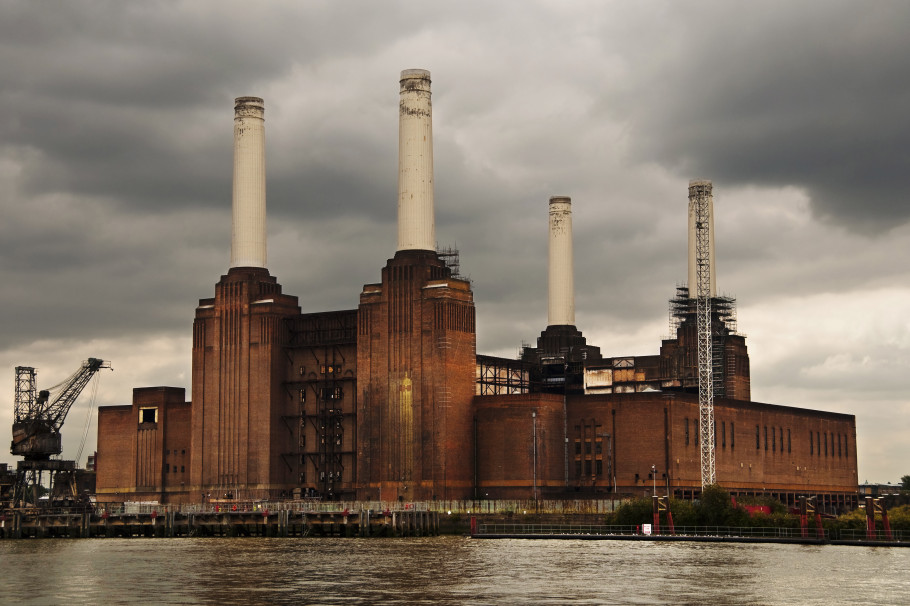
The site saw many false-starts to redevelop the site (including an amusement park project and a proposed new 60,000 seat stadium for Chelsea Football Club), which left the power station in ruins and derelict, as well as a major target for urban explorers and photographers. But the area is now being turned into a significant new hub for retail and housing, with Apple among the high-profile companies setting up offices there. A new Underground extension is expected to open soon, the US have moved their embassy to the area, and restaurants have started opening along the new riverside path. London is moving away from its industrial past, and soon all that will be left will be the ruins of an era that will seem as distant to us as the Romans and their temple to a forgotten god.
28 October 2020